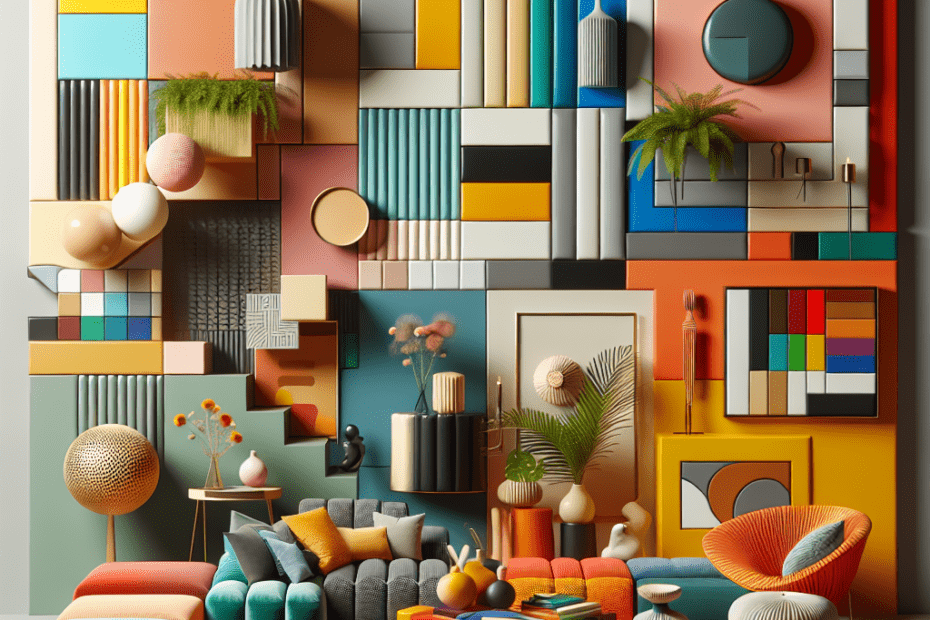“`html
The Role of Color Blocking in Maximalist Design
Maximalist design is making a bold comeback in the world of interior decor, and one of its most sensational techniques is color blocking. Defined by the use of contrasting, often clashing, colors to create vivid sections within a space, color blocking in maximalist design serves as a lively counter to minimalism. They are embracing this vibrant form of expression, leveraging the power of color to transform spaces into energetic, stimulating environments.
The Basics of Color Blocking
Color blocking involves placing blocks of solid color next to each other. In the context of maximalist design, the aim is to use this strategy to introduce a playful yet sophisticated mood into a space. By doing so, designers create a dynamic, lively look that draws the eye and stimulates conversation. It’s more than just placing colors together; it’s about creating a visual rhythm and pattern that challenges conventional aesthetics.
Why Color Blocking Resonates With Maximalist Design
Maximalist design is characterized by its use of vibrant patterns, eclectic mixes of textures, and bold contrasts. Color blocking enhances this style by introducing distinct delineations of color that add depth and complexity. The seemingly chaotic, yet meticulously curated, aesthetic breaks the conventional rules of design, inviting more personality and flair to an otherwise traditional space.
Statistics on the Popularity of Maximalist Design
According to a report from Design Census 2023, 37% of interior designers reported using maximalist design elements in their projects, up from 25% in the previous year. This signifies a growing preference for bold, expressive spaces over minimalist decor.
Effective Techniques for Implementing Color Blocking
Implementing color blocking requires a thoughtful approach. Designers often start by selecting a palette of contrasting or complementary colors. They choose color combinations that reflect the personality of the inhabitants or the intended mood of the space. Proper spacing and placement of these colors within the room are crucial to maintaining the excitement while preventing visual overload. Creating balance within the chaos is key.
| Color 1 | Color 2 | Style Influence |
|---|---|---|
| Electric Blue | Sunny Yellow | Modern Eclectic |
| Fiery Red | Soft Pink | Romantic Maximalism |
| Turquoise | Lime Green | Retro Revival |
The Psychological Impact of Color Blocking
Colors can deeply affect emotions and behaviors. Maximalist design employs color blocking not just for its aesthetic appeal but also for its ability to evoke certain moods. For instance, warm colors can energize a room, encouraging activity and social interaction, while cool colors can have calming effects, making them suitable for relaxation spaces.
Examples of Color Blocking in Popular Design
Several home interior projects have successfully employed color blocking as a fundamental part of their design philosophy. Whether it’s through vibrant feature walls or in the balanced placement of colorful furniture, these examples illustrate how maximalist principles can be applied for dramatic effect. TV shows like “Extreme Makeover: Home Edition” have popularized these designs, making them accessible to a broader audience.
Key Takeaways
- Color blocking is essential to creating energetic and dynamic spaces in maximalist design.
- The popularity of maximalist design has risen significantly, reflecting a shift towards more expressive interiors.
- Choosing the right color combinations and proper placement is crucial to successful color blocking.
- Color blocking has a psychological impact, influencing the mood and function of a space.
FAQ
Q1: What is the main goal of color blocking in design?
A1: The main goal is to create a vibrant, dynamic aesthetic by using contrasting or complementary colors to define sections within a space.
Q2: How has the popularity of maximalist design changed recently?
A2: Maximalist design has become more popular, with 37% of designers incorporating its elements, up from 25% last year.
Q3: What are some effective color combinations for color blocking?
A3: Some popular combinations include electric blue with sunny yellow, fiery red with soft pink, and turquoise with lime green.
Q4: What psychological effects do different colors in color blocking have?
A4: Warm colors can energize and encourage activity, while cool colors can calm and promote relaxation.
Q5: Can color blocking be applied to both walls and furniture?
A5: Yes, color blocking can be applied to walls, furniture, and even accessories to create coherence in maximalist designs.
“`
